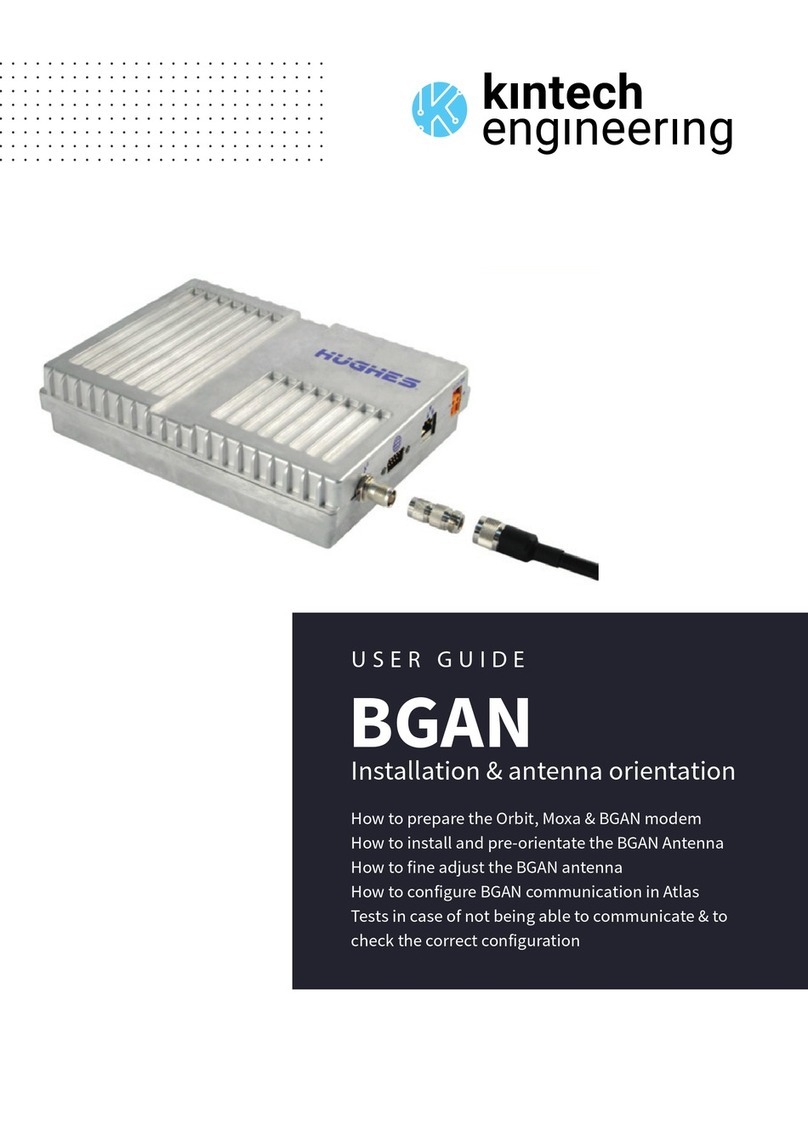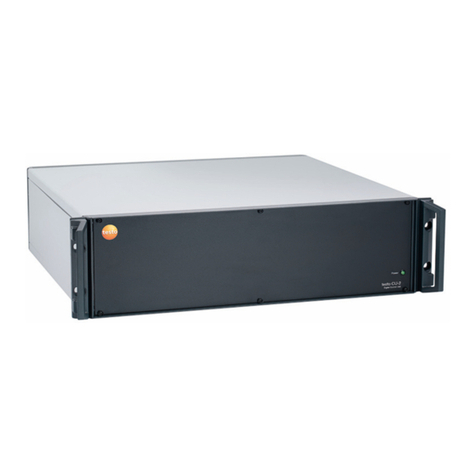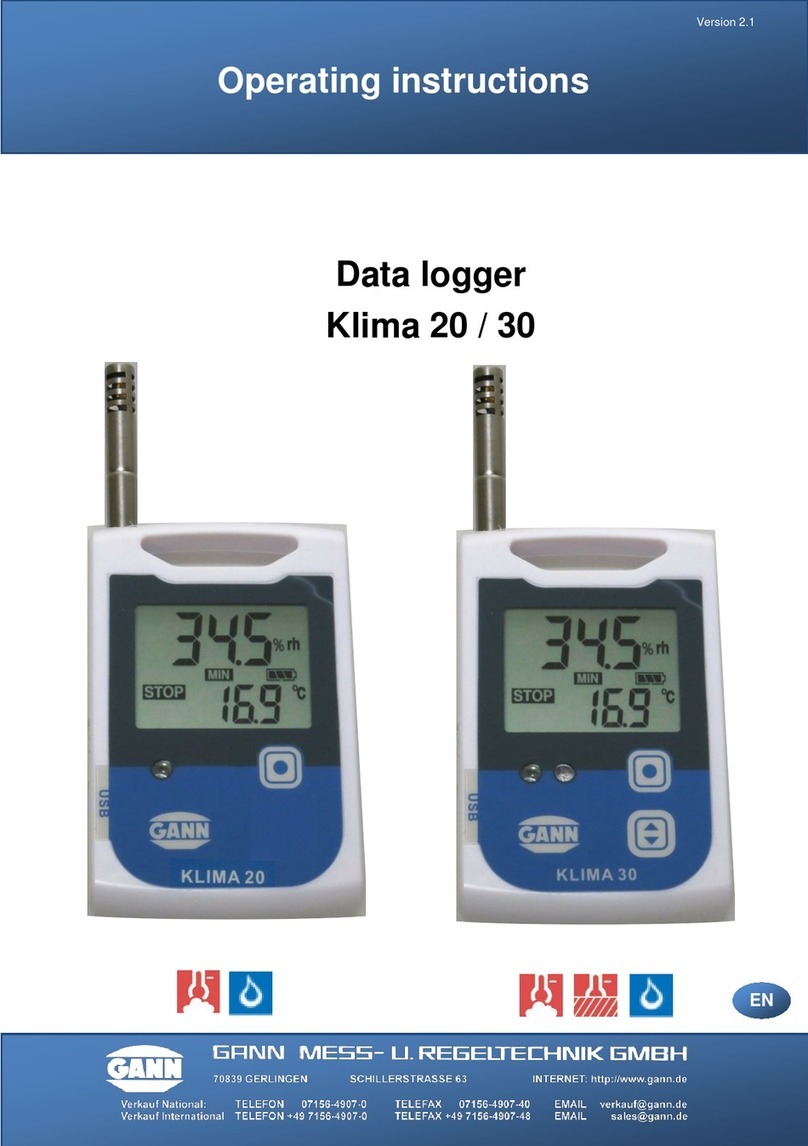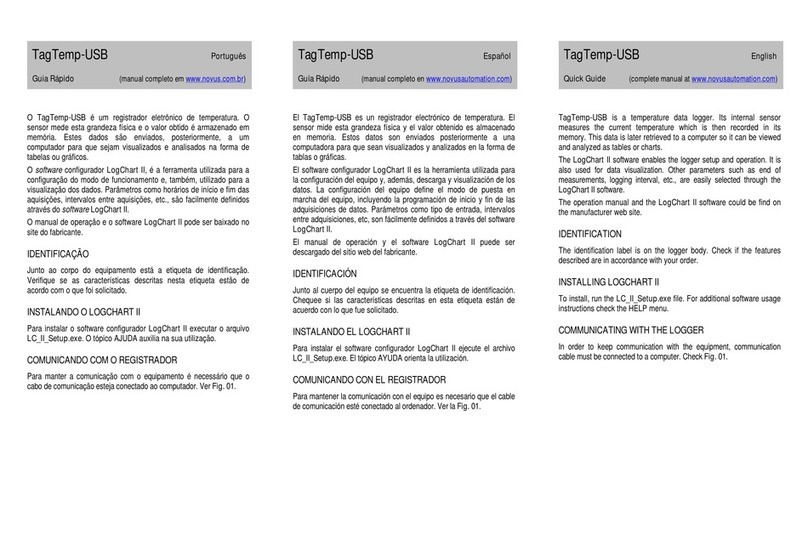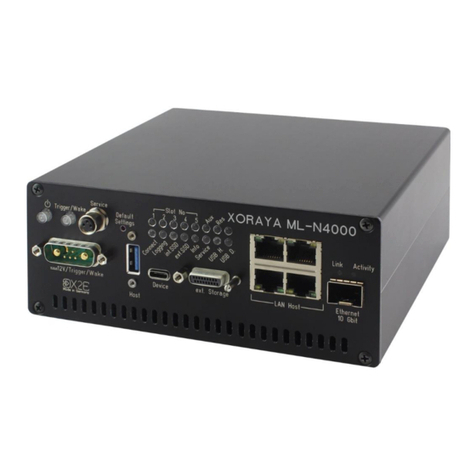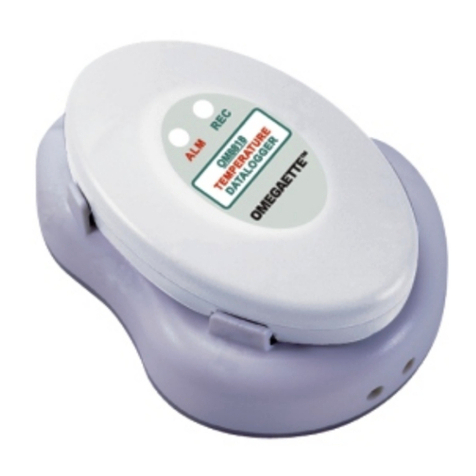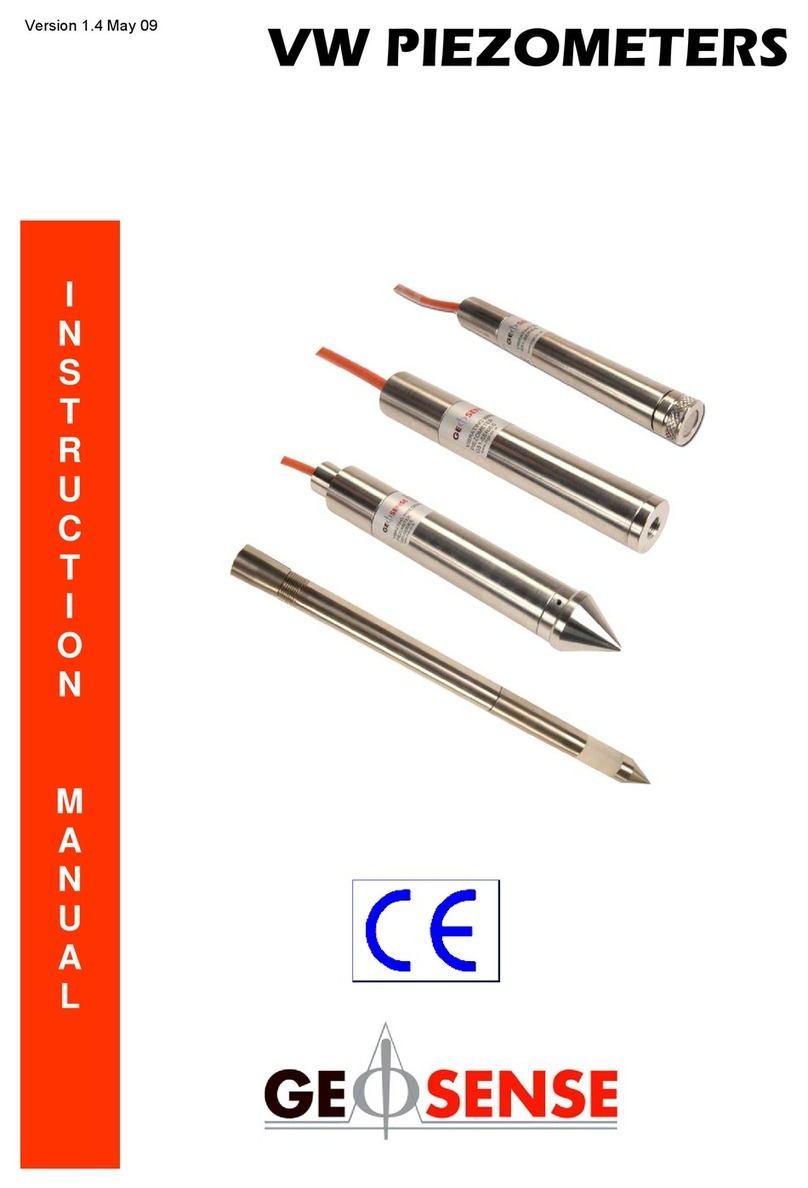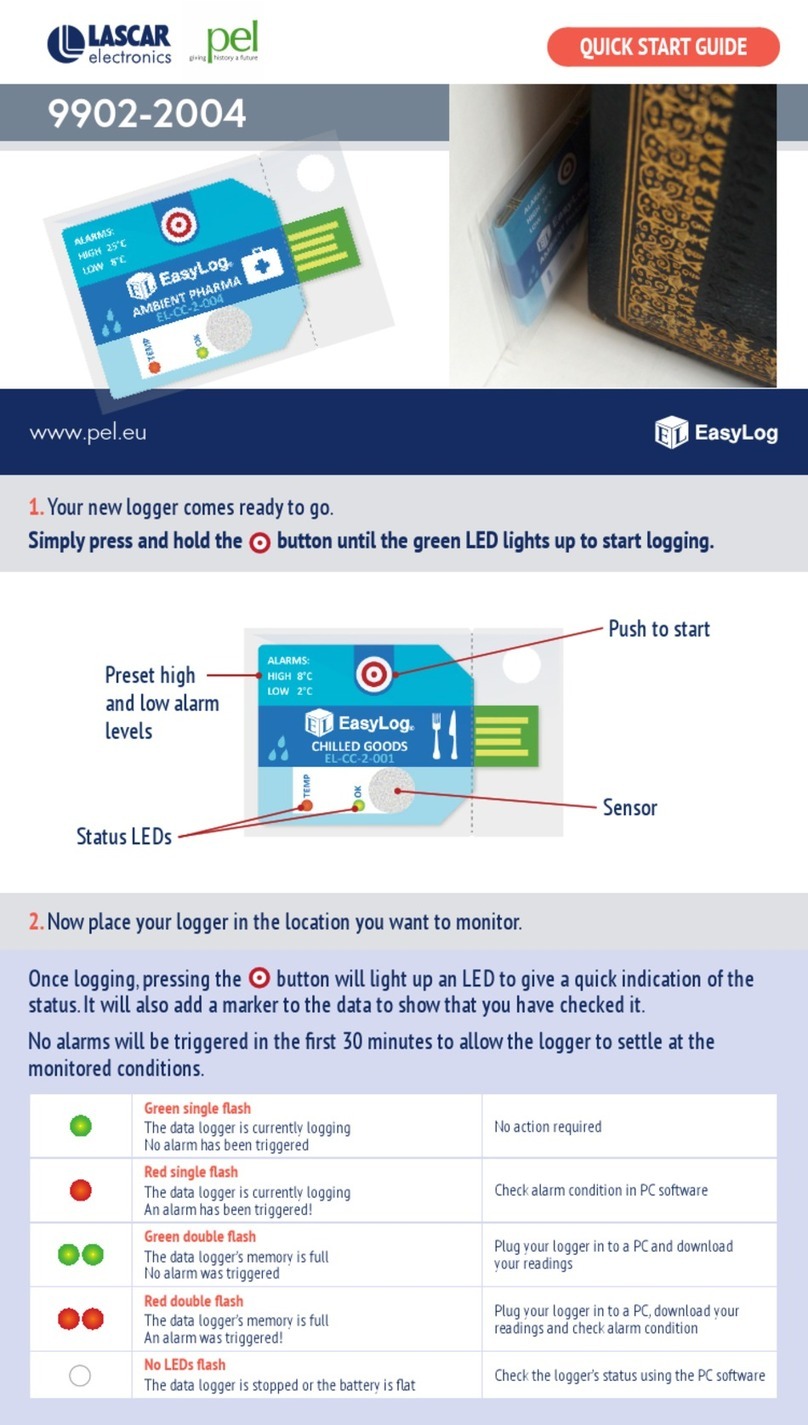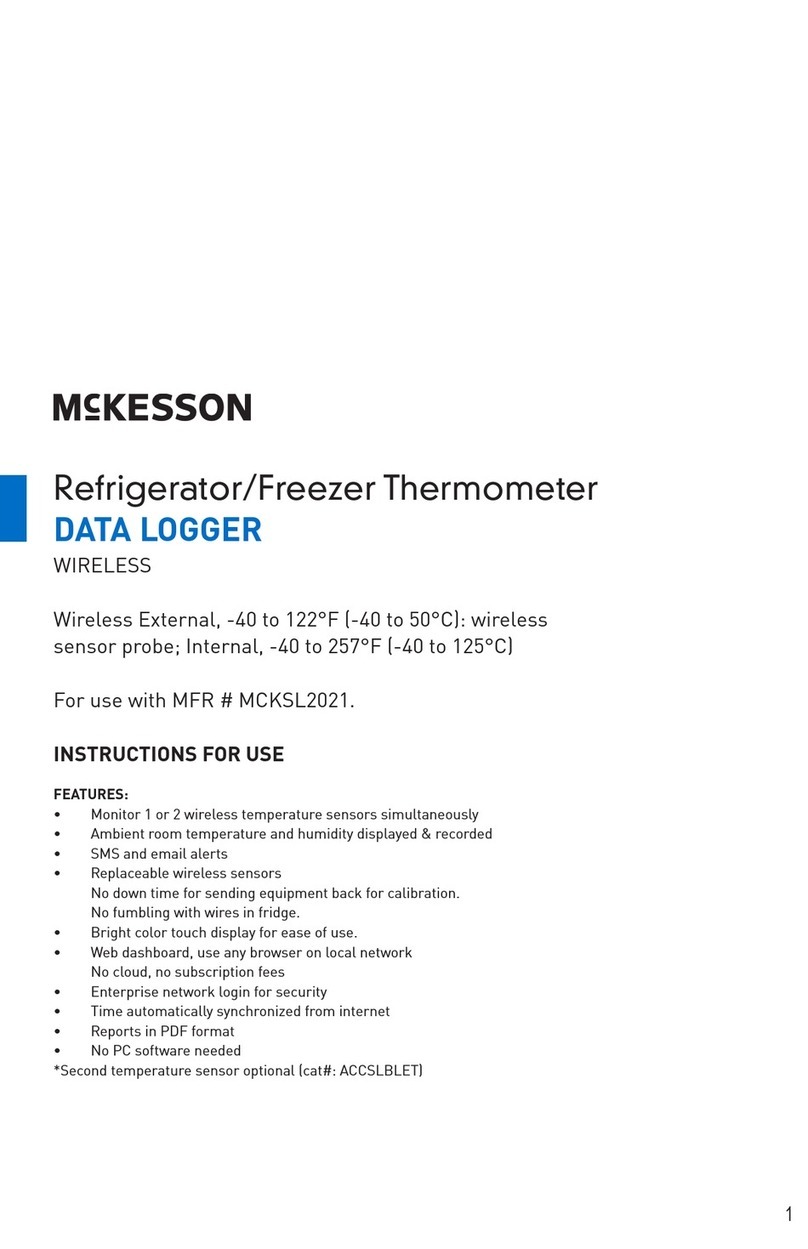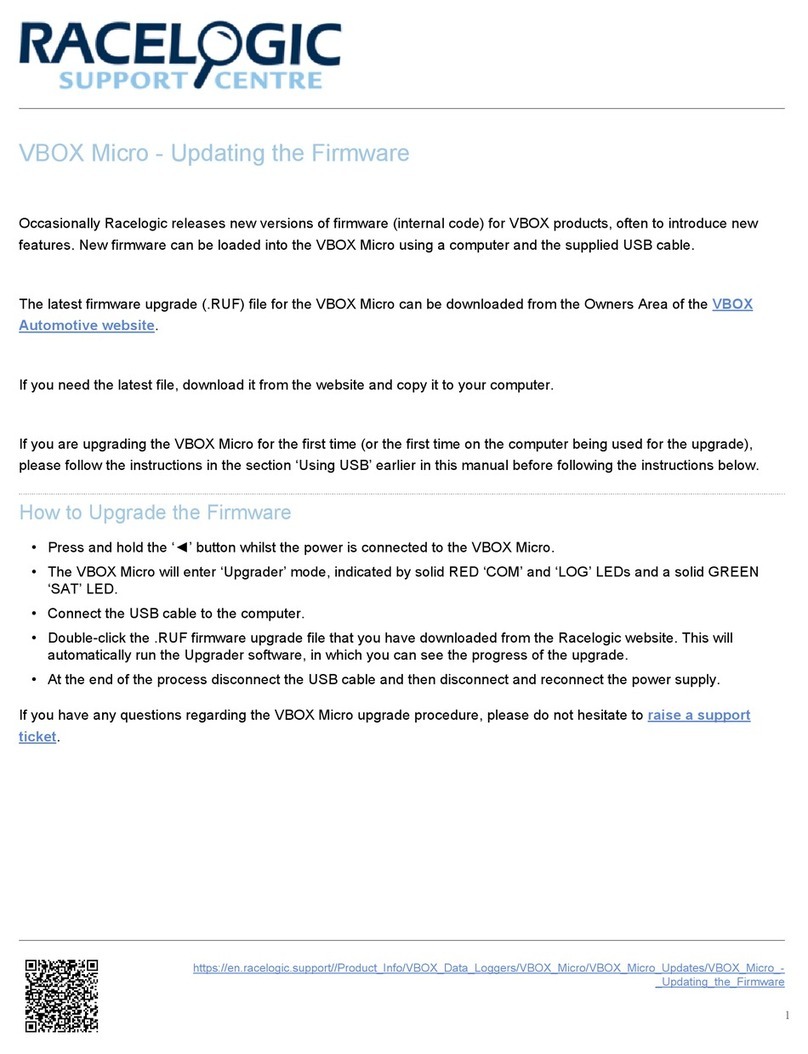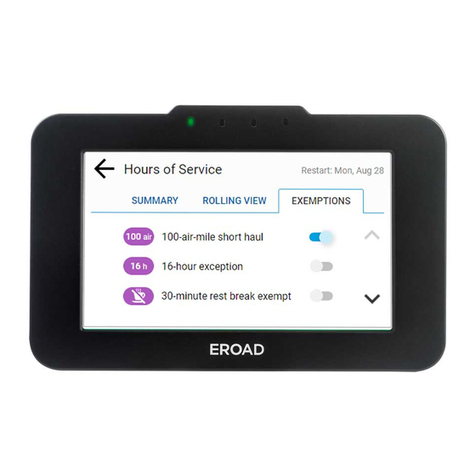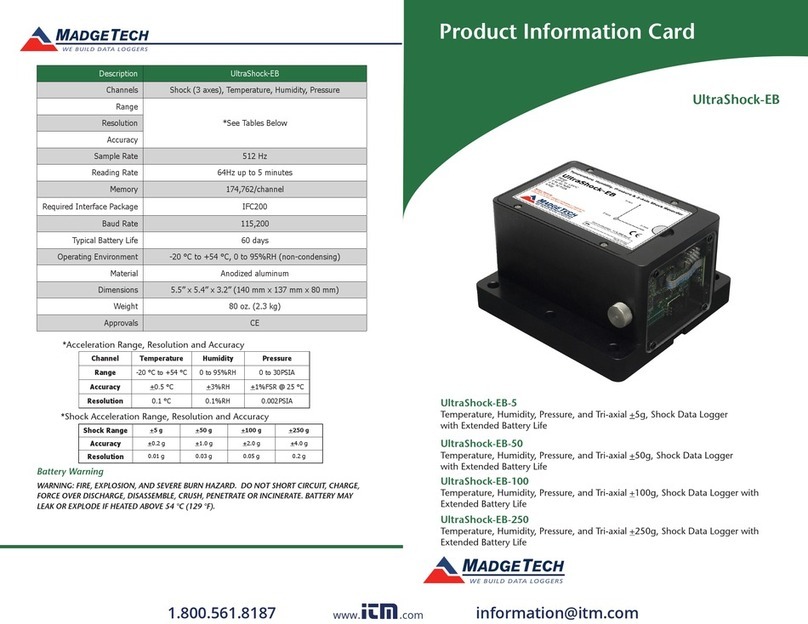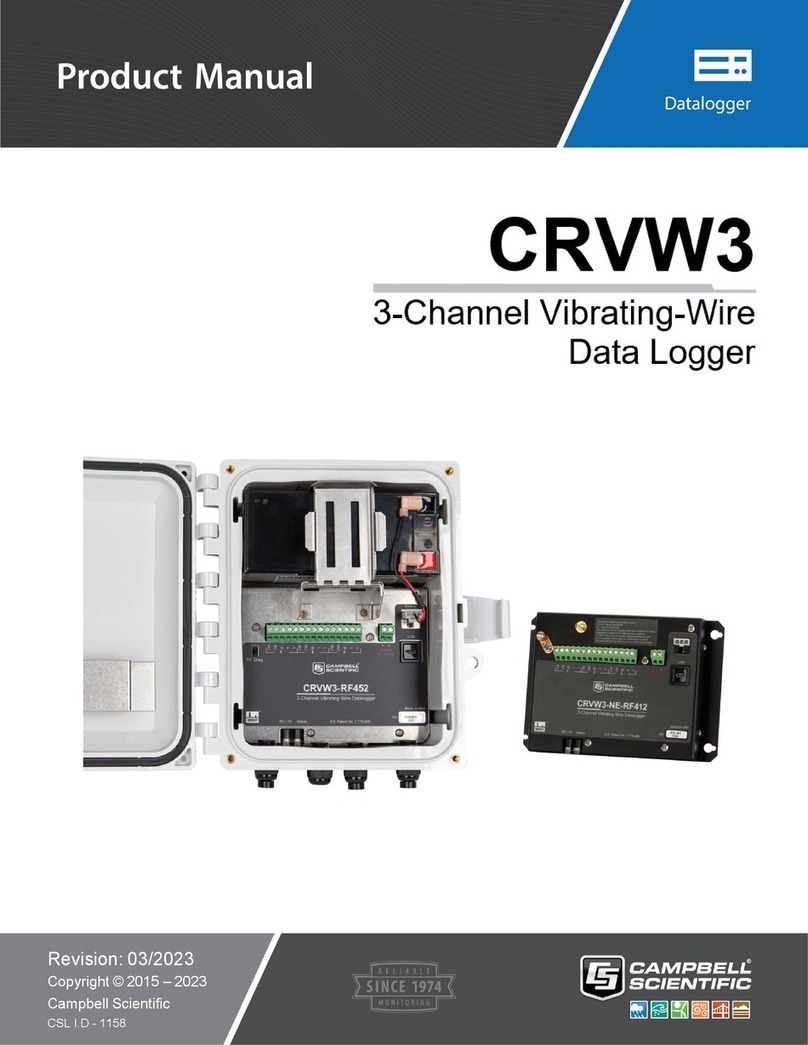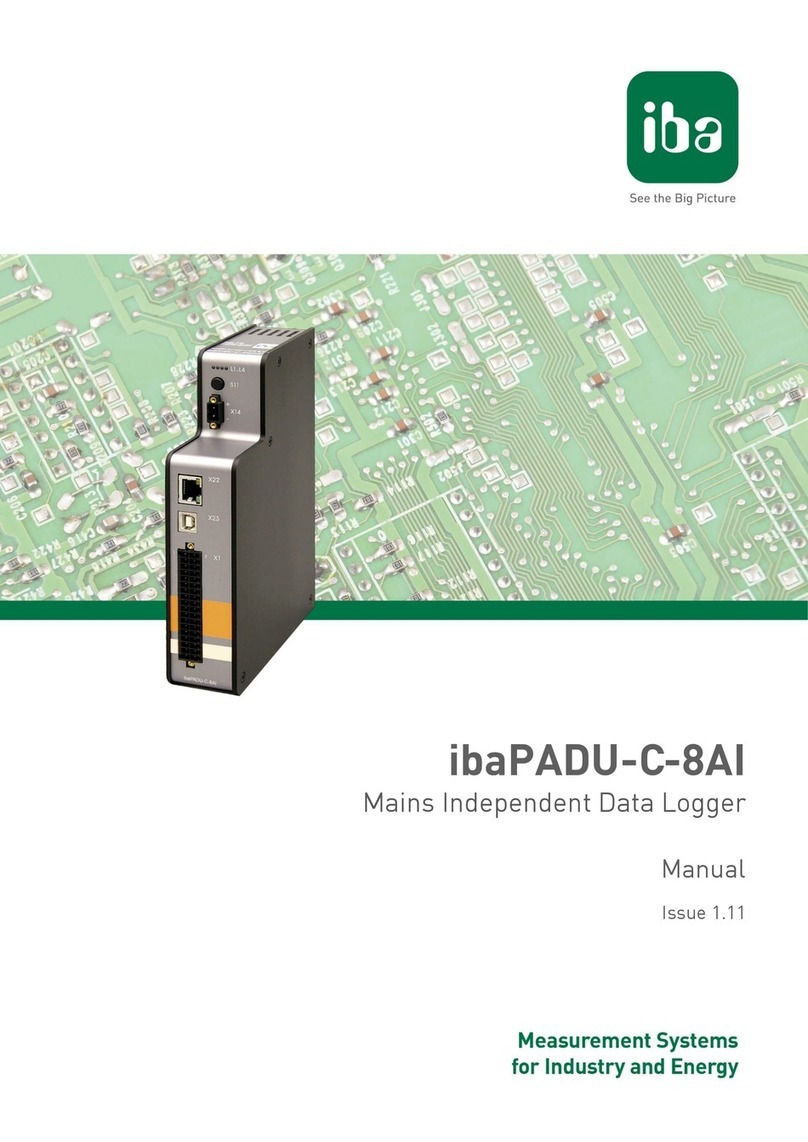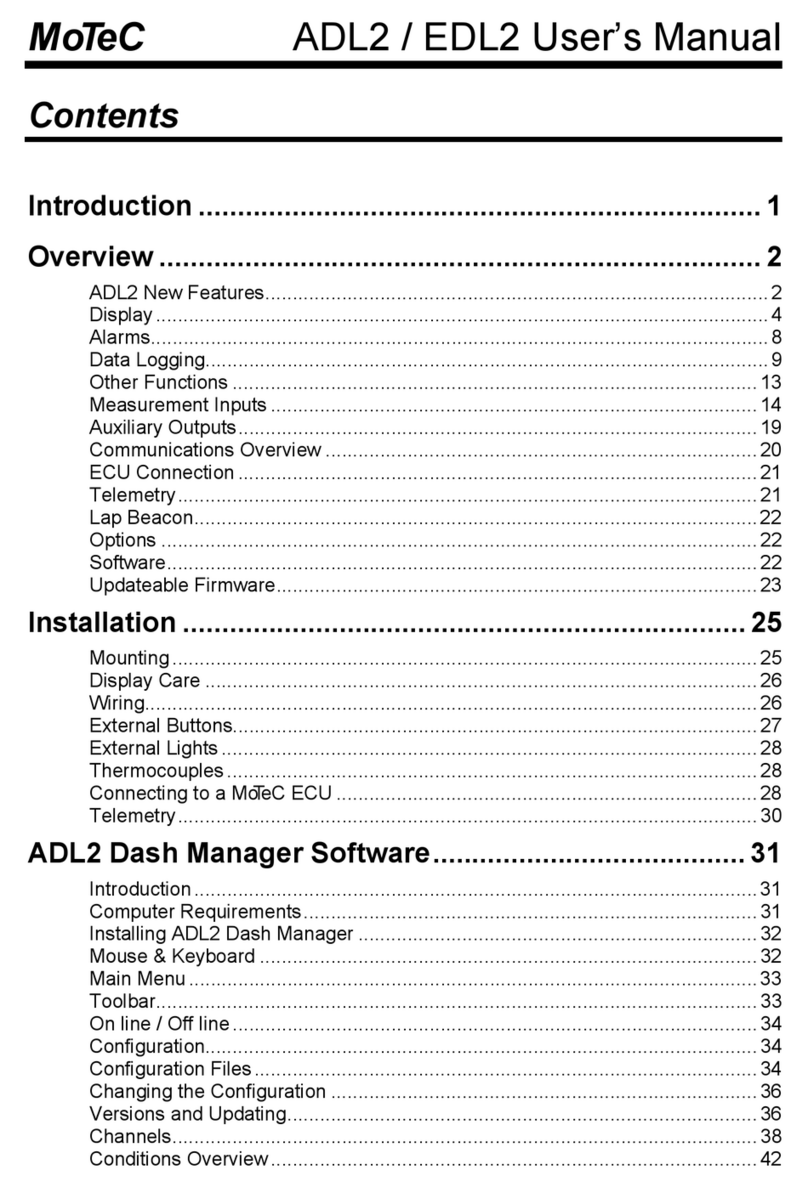Geospace GSB User manual

GSB User Manual
GSB User Manual (593-01940-01 Rev C) release date: TBD Page 1 of 27
GSB
User Manual
Geospace Technologies Corporation
7007 Pinemont Drive
Houston, TX 77040
TEL (713) 986-4444
FAX (713) 986-4447
www.geospace.com

GSB User Manual
GSB User Manual (593-01940-01 Rev C) release date: TBD Page 2 of 27
© 2020 Geospace Technology Corporation
This document is copyrighted by Geospace Technology Corporation (GTC). No part of this publication
may be reproduced, transmitted, transcribed, stored in a retrieval system, or translated into any
language or computer language in any form or by any means, electronic, manual, or otherwise, without
written permission of Geospace Technologies Corporation, 7007 Pinemont Drive, Houston, Texas 77040,
U.S.A. Copyright violators may be subject to civil penalties.
DISCLAIMER:
Geospace Technologies Corporation makes no warranties as to the accuracy, validity, or fitness for use
of the contents of this Manual. Geospace Technologies Corporation reserves the right to revise the
information in this Manual at any time without prior notice.

GSB User Manual
GSB User Manual (593-01940-01 Rev C) release date: TBD Page 3 of 27
Table of Contents
1. - Features...................................................................................................................4
2. – GSB data downloader and charger......................................................................5
2.1 – Portable chargers and data retrieval.............................................................. 5
2.2 – GSB trailer.............................................................................................................. 6
3. – GSB operational modes ........................................................................................6
3.1 – Record mode ......................................................................................................... 7
3.2 – Sleep mode............................................................................................................ 8
3.3 – Disabled mode...................................................................................................... 8
3.4 – Search lost device mode................................................................................... 8
3.5 – Powered off........................................................................................................... 8
4– Field operation instructions....................................................................................9
4.1 – Deploying GSBs................................................................................................... 9
4.2 – Picking up GSBs................................................................................................ 13
4.3 –GSB LED flash codes ........................................................................................ 15
4.4 – LineViewer, LHR+LHV operations ................................................................ 16
4.5 – Extended operation time ................................................................................. 17
4.6 – Charge of internal battery ............................................................................... 18
4.7 – Preparing GSBs for storage or shipment................................................... 19
5. – GSB test................................................................................................................20
5.1 – Instrument test ................................................................................................... 21
5.2 – Sensor test .......................................................................................................... 24
6– Attachments ...........................................................................................................26
6.1 – GSB-1 specifications........................................................................................ 26
6.2 –GSB-3 specifications ........................................................................................ 27

GSB User Manual
GSB User Manual (593-01940-01 Rev C) release date: TBD Page 4 of 27
1. - Features
The GSB is a continuous cable-free autonomous seismic data recorder unit that
includes a battery inside the case. There are models available for 1or 3 channels.
The GSB has two external connectors, one to download data/charge the internal
battery and the connector for the external geophone.
Features include
24 bits resolution and 124 dB instantaneous dynamic range
Battery life: 60 days @ 24 hours/day operation for 1 channel devices or
40 days for 3 channels
A low power option is available for GSB-3s to increase operation time
Record time can be extended by connecting an external battery or a solar
panel
Built-in full resolution test signal generator
Solid state flash memory: 16 or 32 GB (115-230 days at 2 ms SR per
channel)
No additional equipment required to start recording seismic data during
deployment
Provides QC status via radio to LHR 2.0 and LineViewer_32_1.1.1.102
or higher versions
Includes an internal inclinometer for tilt measurements

GSB User Manual
GSB User Manual (593-01940-01 Rev C) release date: TBD Page 5 of 27
Temperature operation range: -40 to +60°C
GSB LED provides information about unit state, errors and charging
process, useful during deployment and pick-up operations
Charging the internal battery requires as little as one hour for every 10
days of deployment
Light weight 1 Kg (1 or 3 channels models)
2. – GSB data downloader and charger
The GSB racks provide an interface to download data and charge the internal
battery. The racks are 12 slots modular. There are two types of racks available to
be used with the GSBs:
•Portable for small crew operation or to be used in remote sites.
•GSB trailer for normal operations.
2.1 – Portable chargers and data retrieval
The portable charger can charge internal battery and retrieve seismic data from up
to 24 GSBs simultaneously.

GSB User Manual
GSB User Manual (593-01940-01 Rev C) release date: TBD Page 6 of 27
2.2 – GSB trailer
The GSB trailer includes several modules according to the customer’s request,
each module can charge the internal battery and retrieve seismic data from up to
60 GSBs simultaneously. A trailer with 8 modules (480 slots) can charge
approximately 2000 GSBs per days.
Vertical racks can also be installed in containers or any warehouse.
3. – GSB operational modes
The operational modes for the GSB are
•Record mode. Recording seismic data

GSB User Manual
GSB User Manual (593-01940-01 Rev C) release date: TBD Page 7 of 27
•Sleep mode. GSB is on, but it does not record seismic data (to reduce power
consumption)
•Disabled mode. GSB had not been activated to start recording data
•Search lost device mode. To improve the GSP position accuracy and
display a SOS pattern in the LED
•Powered off. All GSB circuitry is turned off. It is set when devices are
programmed to storage or shipping mode
3.1 – Record mode
This is the normal operation mode in the field when the GSBs are recording
seismic data. To be in this mode, the desired recording hours should be
programmed using parameters set in GeoReaper.
To enter into record mode, the GSBs must be deployed following the sequence
explained in section 4.1.

GSB User Manual
GSB User Manual (593-01940-01 Rev C) release date: TBD Page 8 of 27
3.2 – Sleep mode
In this mode, the GSBs are not recording seismic data, but the units still have
some basic circuitry active, including the internal radio. The GSBs are in this
mode when they are not inside the record hours window time programmed by
GeoReaper.
3.3 – Disabled mode
The GSBs are not recording data, but they are not in sleep mode. They are in this
mode after one of the following circumstances:
•The GSB was removed from the rack, and record mode had not been
activated.
•The GSB was commanded to go to disable mode immediately before the
unit was picked up from the spread. The sequence is explained in section
4.2.
3.4 – Search lost device mode
In this mode, the GSB searches for GPS for 15 minutes to get an accurate position
while showing a SOS LED pattern. It helps to improve its location if the device is
recording or to find a disabled device (lost in the field). To put a device in this
mode, the user should use the LHR+LHV combo to perform the “Find Lost
Device” operation. If you are searching for a lost GSB that has not been deployed
yet, you need to use the scripted channel -1. The devices are programmed to use a
different channel at this time to avoid getting QC data while they are being
transported to the field location.
3.5 – Powered off
In this mode, all GSB circuitry is turned off. It is programmed under the
GeoReaper command, and it is used when the units are getting ready to be
shipped to another location or are to be stored during longer period of times. It
returns to any functional mode after it is placed in the rack or connected to an
external Geospace battery.

GSB User Manual
GSB User Manual (593-01940-01 Rev C) release date: TBD Page 9 of 27
The GSB LED flashes 5 times per second while they are in the rack. Once they
are removed from the rack (or the rack is powered off), the LED flashes on solid
for 5 seconds and then turns off.
4– Field operation instructions
When the GSBs are removed from the rack, they immediately go to disabled mode
(radio channel for communication is programmed to channel -1). In this mode, the
GSB LED shows two quick flashes every 10 seconds (see section 4.3 for detailed
LED flash codes descriptions).
4.1 – Deploying GSBs
To deploy GSBs (to start recording seismic data), follow the next steps:
A. Plant the sensor properly on the ground.

GSB User Manual
GSB User Manual (593-01940-01 Rev C) release date: TBD Page 10 of 27
B. Put the GSB in record mode:
a. Hold the GSB from the geophone side, and keep it as vertical as
possible (see notes at the end of this section).
b. Observe that the GSB LED goes to an intermediate state where the
LED flashes for one second on followed by one second off pattern.

GSB User Manual
GSB User Manual (593-01940-01 Rev C) release date: TBD Page 11 of 27
C. Connect the sensor to the GSB.
D. Set the GSB on the ground on the base plate (tilt of 90°+/- 20°).
E. Observe that the LED shows the deployment sequence running geophone
tests (LED flash rapidly 5 times a second). If the GSB is still showing sleep
mode, because the angle on step B was incorrect, restart the sequence.
F. Wait until the GSB is in recording mode (one quick flash every 8 seconds
for “recording with GPS off” or LED two quick flashes once per second for
“GPS on with GPS fix”). It continues to record until device is sent to
disabled mode (see section 4.2).

GSB User Manual
GSB User Manual (593-01940-01 Rev C) release date: TBD Page 12 of 27
Notes:
•GSB power connector up (Tilt 0°to +/- 20°) for deployment:
•GSB flat (tilt of 90°+/- 20°) :

GSB User Manual
GSB User Manual (593-01940-01 Rev C) release date: TBD Page 13 of 27
4.2 – Picking up GSBs
To pick GSBs properly from the spread, follow the next steps:
A. Hold the GSB from the battery side and keep it as vertical as possible
B. Wait for the LED turns on (about 10 seconds)
C. Put the device “plate-up” on the surface. After about 2 seconds, the GSB
goes to disabled mode.

GSB User Manual
GSB User Manual (593-01940-01 Rev C) release date: TBD Page 14 of 27
D. Disconnect the geophone
E. GSB is ready to be picked up from the spread, while is disabled, the LED
blinks twice every 10 seconds indicating a disabled state.
F. To Transport GSBs is recommended to grab them from the geophone
side to avoid going to the pre-deploy mode.
Note: If the GSB is not set to disabled mode it could generate extra
segments of data while it is being moved to a different location.

GSB User Manual
GSB User Manual (593-01940-01 Rev C) release date: TBD Page 15 of 27
4.3 –GSB LED flash codes
GCL/GSB Deployed Codes:
GPS on but no GPS fix: One LED flash per second.
GPS on with GPS fix: Two quick flashes once per second.
Recording with GPS off: One quick flash every 8 seconds.
Sleeping or Disabled: Two quick flashes every 10 seconds.
Running geophone tests: LED flashes rapidly 5 times a second.
Ready to deploy: The LED flashes for one second on followed by one
second off pattern.
SOS Pattern: LED flashes 3 times followed by 3 short flashes, the
sequence starts when the device receives a “searching for lost device”
command and continues while radio communication is valid.
Start-up Error Codes:
Critical GSR Error: LED flashes repeatedly on solid for 1 second
followed by off for one second.
Critical Geophone 1 Error: LED on solid for 1 second followed by 1
short pulse.
Critical Geophone 2 Error: LED on solid for 1 second followed by 2
short pulses.
Critical Geophone 3 Error: LED on solid for 1 second followed by 3
short pulses.
Critical Geophone 4 Error: LED on solid for 1 second followed by 4
short pulses.
Critical Battery Error: LED on solid for 1 second followed by 5 short
pulses.
Flash Error: LED on solid for 1 second followed by 6 short pulses.
Flash Almost Full: LED on solid for 1 second followed by 7 short
pulses.
GCL/GSB Ethernet Codes (in DCR)
Connected: LED flashes once every 2 seconds.
Erasing Flash: LED flashes on solid for 0.5 seconds followed by off for
0.5 seconds.
Charging: LED flash on for one second and off for 1 second.
Prepared to enter ship mode: LED flashes rapidly 5 times a second.

GSB User Manual
GSB User Manual (593-01940-01 Rev C) release date: TBD Page 16 of 27
4.4 – LineViewer, LHR+LHV operations
The LineViewers and LHRs get statuses from GSBs via radio. LVs should have
the script version 2.0 from GeoReaper loaded to allow a QC evaluation that
includes Parameters checksum.
The GSBs have inclinometers to allow measuring the angle of the case vs gravity
vector as follows:
Tilt information may be read in QC devices:
•Using Line Viewer:

GSB User Manual
GSB User Manual (593-01940-01 Rev C) release date: TBD Page 17 of 27
•Using LHV+LHR:
4.5 – Extended operation time
The GSB recording hours may be extended connecting an external battery or a
solar panel.
•Using an external battery, the GSB gets the power from the external
battery first and then switches to the internal one.

GSB User Manual
GSB User Manual (593-01940-01 Rev C) release date: TBD Page 18 of 27
•Using a solar panel, it provides additional power to charge the internal
battery and feed the GSB. The energy provided during daylight time is
about 10 times the power required by a GSB.
4.6 – Charge of internal battery
The charging of the internal battery is performed when the device is connected to
the rack. The GSBs may be programmed to start the charging process as soon they
are connected to the rack; no need of external commands. The charge of the battery
requires 1 hour for every 10 days of field recording time. The process of charging
starts feeding the battery with a constant current of 4.2 Amperes up to the time
when the nominal voltage (4.2 Volts) is reached, and then the charging continues
with constant voltage until it reaches the minimum current.

GSB User Manual
GSB User Manual (593-01940-01 Rev C) release date: TBD Page 19 of 27
Note: Charge temperature range: 5 to 45℃
Geospace software provides two types of battery charging methods. The user can
select from options to maximize the deployment time or to optimize the battery
life. Using the last one will reduce the recording time.
4.7 – Preparing GSBs for storage or shipment
When GSBs are about to be stored or shipped via air, in order to improve the
battery life expectancy or to meet air transport industry regulations, Geospace
recommends setting the batteries to 60 or 30% of their capacities, respectively.
This operation is performed upon GeoReaper command. When the GSBs are set to
60 or 30%, they use the measured voltage to estimate the actual capacities of the
batteries. The following situations can occur:
•If the capacity is higher than the programmed limit, the GSB enters a “turn
everything on” or “full power drain” mode. The LED is always on, which is
an indication that the device is discharging. The user doesn’t have to wait
for it to finish the discharging operation, because they go into power down
when finished (LED always off). They can be removed from the rack and
put into stock immediately,

GSB User Manual
GSB User Manual (593-01940-01 Rev C) release date: TBD Page 20 of 27
•If the capacity is lower than the programmed limit, the GSB battery is
charged until it reaches the programmed capacity, and the LEDflashes on
for one second and off for 1 second. Once it finishes the charge, the LED
flashes rapidly 5 times per second. The unit can be removed from the rack.
The LED will be ON for 30 seconds and then powers off.
•If the capacity is equal to the programmed limit, the LED flashes rapidly 5
times per second. After it is removed from the rack, the LED will be ON for
30 seconds and then powers off.
Notes:
•The GSBs are powered off. To activate them again, they must be
reconnected to the GSB rack.
•The GSBs are not required to go fully charge or discharge the battery for
initial evaluation of the capacities. The software uses the measured
battery voltages to determine their capacities.
5. – GSB test
Geospace provides different techniques to confirm the proper performance of
GSBs when they are connected to the server or via radio in field operations.
When they are connected to the racks
•To perform instrument test using customized parameters.
•To evaluate memory size, parameters checksum, battery charging state and
data transfer speed.
When they are deployed
•LEDs shows the state of the GSBs at deployment time and while they are
deployed.
•The use of Geospace QC devices (LineViewers and LHRs) allow to
evaluate the state of the deployed GSBs for the following statuses:
oProgrammed SR, filter settings and gain
oSensor state
This manual suits for next models
2
Table of contents

